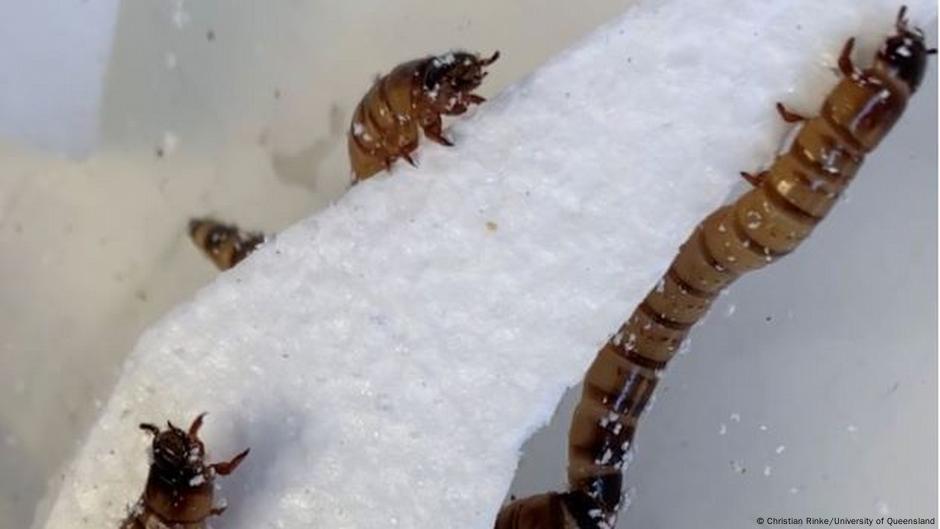Scientists discover a “superworm” capable of eating polystyrene Science and Ecology | Dr..

A group of scientists has found a ‘superworm’ that can feed on polystyrene, a commonly used material that pollutes the seas, so it could become a key to recycling waste, according to a report. The study was published Friday (06.10.2022) in the journal Microbial Genomics.
It is about species Zupupas Morio, beetle larva commonly used to feed pets. This worm has a bacterial enzyme in its intestine that allows it to digest and feed on this thermoplastic.
“They are able to survive on Styrofoam throughout their life cycle,” said Chris Rink, one of the study authors and an expert from the University of Queensland.
Worms can help solve a global problem
The scientist notes that these caterpillars are like a kind of recycling of “little plants” that crush this plastic material with their mouths and then feed the bacteria in their intestines.
The properties of the stomachs of these larvae could contribute to solving one of the most serious problems of the global economy, as it produced about 360 million tons of plastic in 2018, a substance that is usually drawn into the oceans and has a strong impact on the environment. Ecosystems.
The worms were not affected in their development
In their quest to design enzymes that help break down plastic waste through a process that combines mechanical grinding and enzymatic biodegradation, the scientists separated the larvae into three groups: one that was fed with bran, one that was foamed with Styrofoam, and the last that was left without food.
“We wanted to make sure that after eating polystyrene they could develop as cocoons (similar to the cocoon of butterflies) and beetles,” Reinke said, referring to these insects, which can reach between 5 and 6 cm in size at their maximum size and are their original habitat. Central America and Northern South America.
The idea is to “repeat what happens in a worm’s stomach”
Although the ability of these insects to ingest plastic is nothing new to science, this research provides the use of a new metagenomic technique by which “all DNA of the stomach microbes is extracted for sequencing, classification of all encoded enzymes” and a comprehensive analysis of the entire enzyme community,” he explained. Rinke.
Scientists believe that this process will help the material from the decomposition for later use by other microbes to produce bioplastics, among other compounds.
The scientific project does not intend to use millions of this type of worm for large-scale industrial recycling, but instead to find a way to make the best use of enzymes in plastic processing operations.
“We want to replicate what happens in a worm’s stomach,” Renke said, adding that he hopes to produce enzymes and extract proteins in the lab on a large scale for “more efficient use” within five to 10 years.
JU (dpa, ef)

“Award-winning zombie scholar. Music practitioner. Food expert. Troublemaker.”


/cloudfront-eu-central-1.images.arcpublishing.com/prisa/AHVYMMDSTZDTDBFNZ3LMFUOKNE.jpg)






